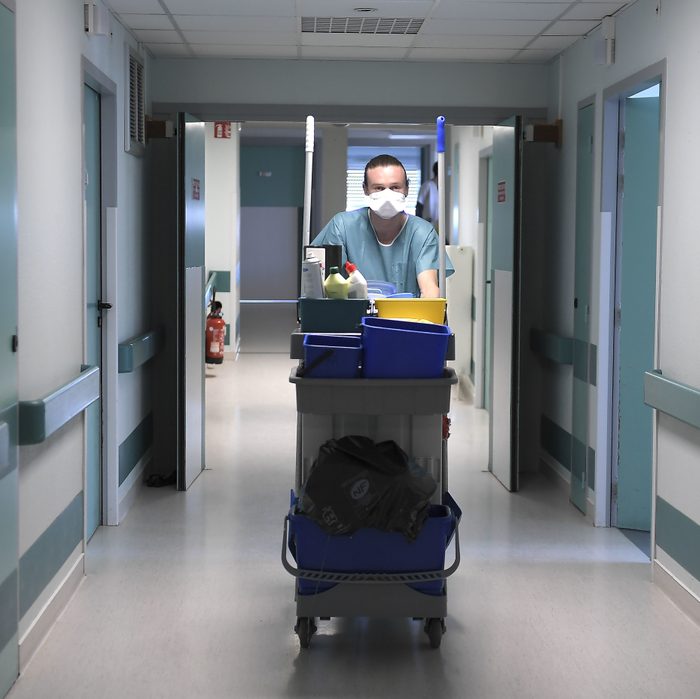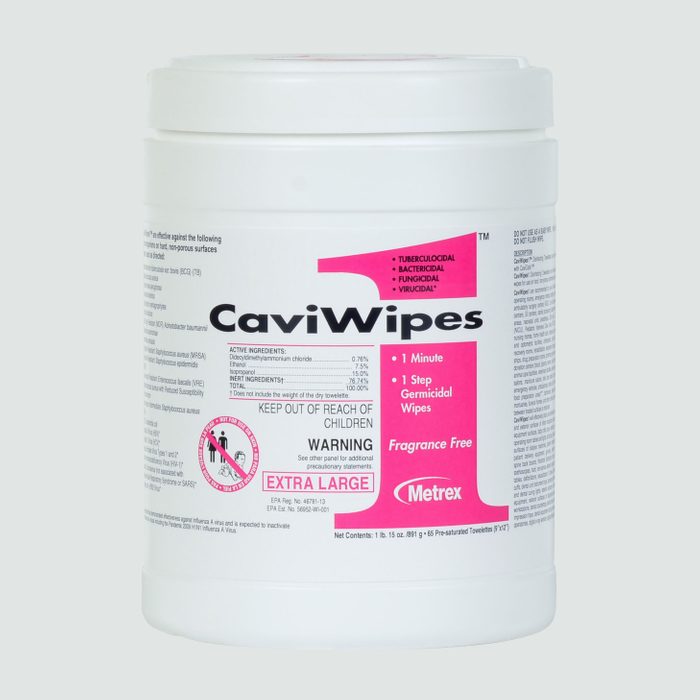 via usamedicalsurgical.com
via usamedicalsurgical.com
Cavi Wipes
A favorite of professional cleaning experts, CaviWipes1 are EPA-approved for use against SARS-CoV-2, the virus that causes COVID-19, and they’re both a biocide and a virucide. Even better? “Because these wipes are made of synthetic fibers, they will not react with the active chemical disinfectant, quaternary ammonium, so the disinfectant will retain 100 percent of its potency,” says Klehm.
But, of course, you need to use them correctly in order for them to work correctly. For that to happen, you have to pre-clean surfaces before applying. “It’s imperative to remember that the effectiveness of the wipes will also decrease drastically (from 100 percent to as little as 12 percent) if the surface is not cleaned with soap and water first,” stresses Klehm. “If used on an unclean surface, the detritus on the surface (aka bioload) will interact with the active chemical and reduce its efficacy.”
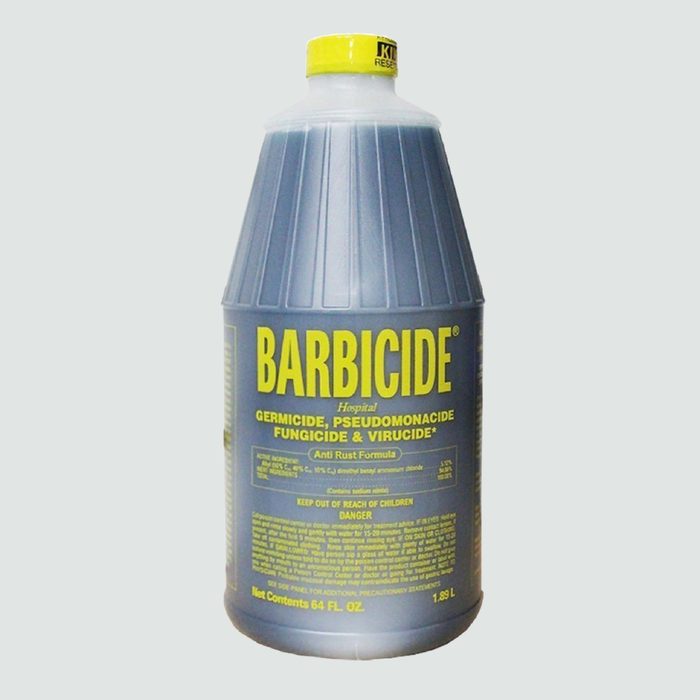 via walmart.com
via walmart.com
Barbicide
Generally used as a disinfectant in hair salons to keep tools and equipment germ-free, Barbicide was recently put on the EPA’s List N, a compilation of disinfectants that the EPA believes will be effective against coronavirus. While List N products haven’t been specifically proven to combat it, they have been proven effective against harder-to-kill viruses and other similar human coronaviruses. Klehm and his company also give Barbicide, along with the other products on List N, the thumbs-up. A word of caution, though: Many online reviewers warn that direct exposure to Barbicide can damage skin, so wear protective clothing when using it. In case you were wondering, this is the difference between cleaning, sanitizing, and disinfecting.
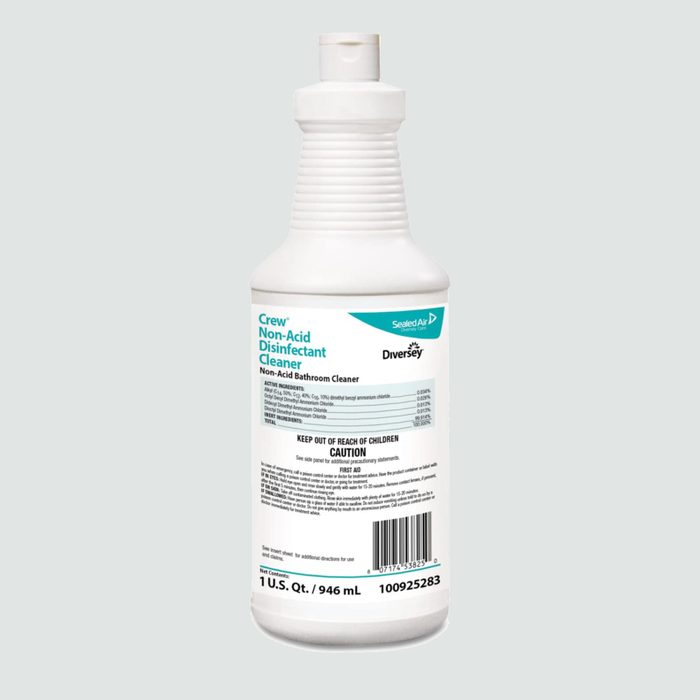 via amazon.com
via amazon.com
Diversey Crew Non-Acid Disinfectant Cleaner
Designed for everything from hospitals and other health care settings to schools and locker rooms, this disinfectant will certainly do the job on your germy house. Its non-acidic formula is generally used for bathrooms. Not only has it been approved by the EPA for coronavirus, but it’s also been proven to kill HIV, staph, salmonella, E. coli, MRSA, and more. Just make sure to leave it on long enough; Klehm says Diversey’s dwell time is ten minutes. Plus, he adds, no matter what disinfectant you use, “remember that when you wipe off the disinfectant, you should never rub back and forth in circles. Remove the disinfectant with a microfiber cloth in a single wiping motion like left to right and then left to right.”
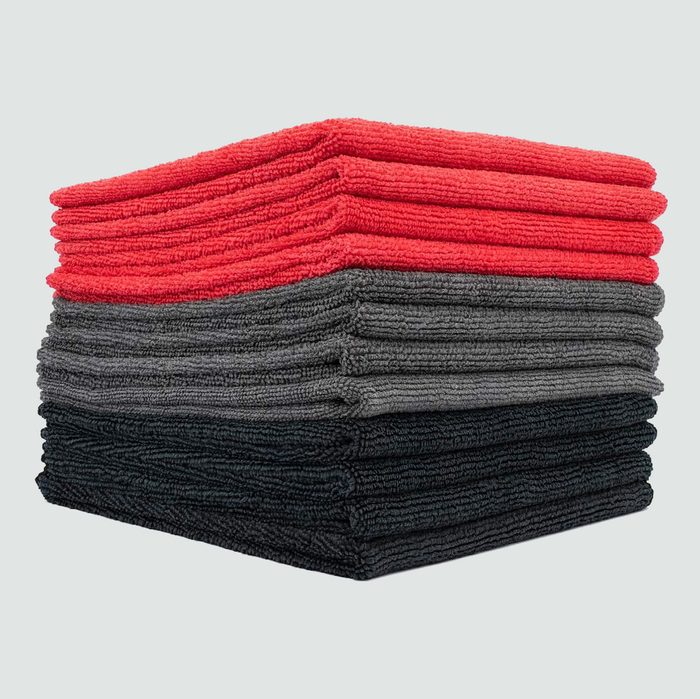 via amazon.com
via amazon.com
The Rag Company All-Purpose Microfiber Cleaning Towels
Nope, this product doesn’t have any disinfectant built into it, but it’s an essential part of a thorough cleaning process in medical facilities, says Cory Chalmers, CEO of Steri-Clean. These commercial-grade, machine-washable microfiber cloths should be used in conjunction with soap and water or an alcohol- or bleach-based product to pre-clean a surface and remove biofilms before proper disinfecting can happen. Paper towels don’t do the job as effectively. “Microfiber cloths do the best job at picking up germs and leave no dust bunnies behind, which could actually hold germs and leave them behind,” Chalmers explains. “Plus, they reduce cross-contamination, use less water and chemicals, and are easier and lighter to use, therefore saving both time and money.”
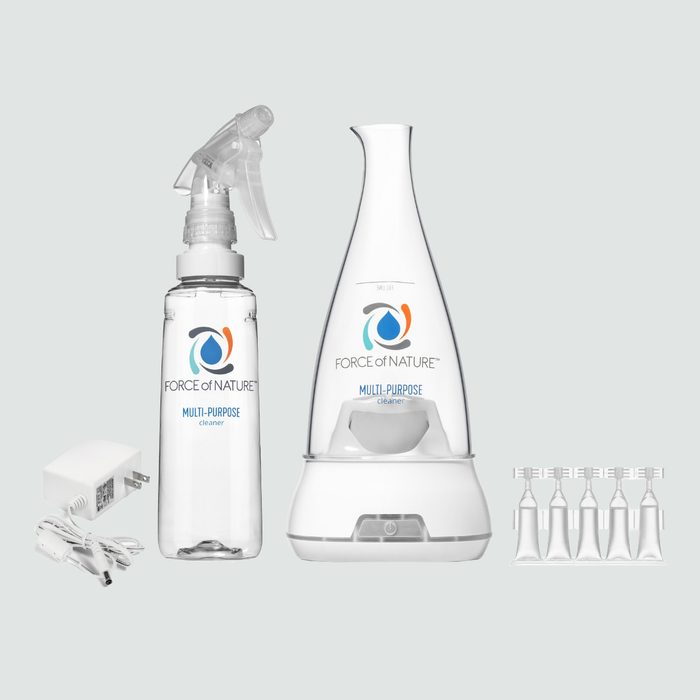 via forceofnatureclean.com
via forceofnatureclean.com
Force of Nature Starter Kit
“Many people don’t realize that not all cleaning products are disinfectants, and that’s an important distinction: The EPA requires that disinfectants kill 99.9 percent of germs,” says Jeanne Breen, MD, a Connecticut-based infectious disease physician and researcher. “Always check the label to make sure it states that the product is an EPA-registered disinfectant.” Force of Nature is a relative newcomer that fits the bill and has the added bonus of being non-toxic. “The disinfecting ingredient is hypochlorous acid, an antimicrobial common in wound healing products. It kills germs and is very gentle,” says Dr. Breen. “Plus, it’s on the EPA’s list of disinfectants for use against SARS-CoV-2. I like that it’s so versatile—I can use it in the kitchen, in the bathroom, and on multiple types of surfaces.”
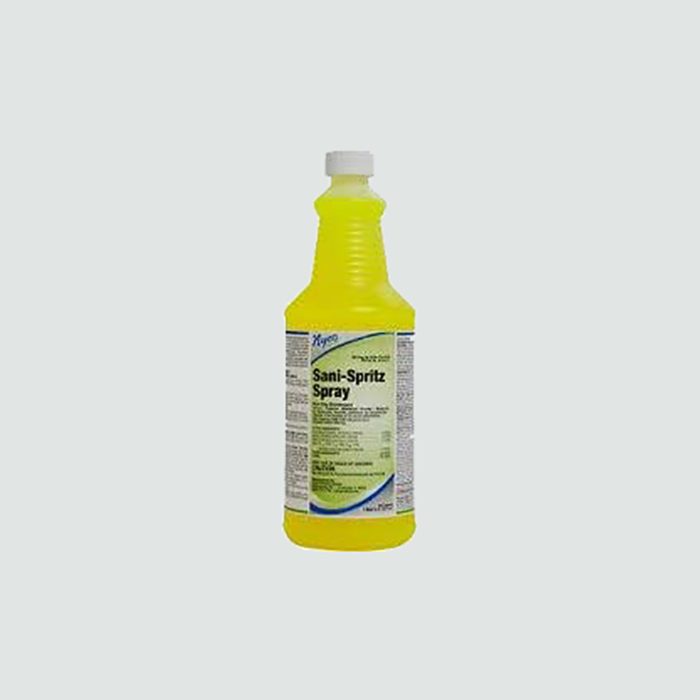 via amazon.com
via amazon.com
Nyco Sani-Spritz
Not only can this ready-to-use disinfectant dispel germs on hard, non-porous surfaces, but it can also be used on most fabrics. “It’s on the EPA N-list, and it’s effective against a wide variety of pathogens including SARS-CoV-2,” says Cody Millsap, vice president of franchise development for Stratus Building Solutions. Used in hospitals, as well as schools and other institutions, it also fights bacteria, fungus, mold, and mildew. One caveat: This particular bottle doesn’t come with a spray trigger, but you can buy a chemical-resistant one to start spritzing and make cleaning easier.
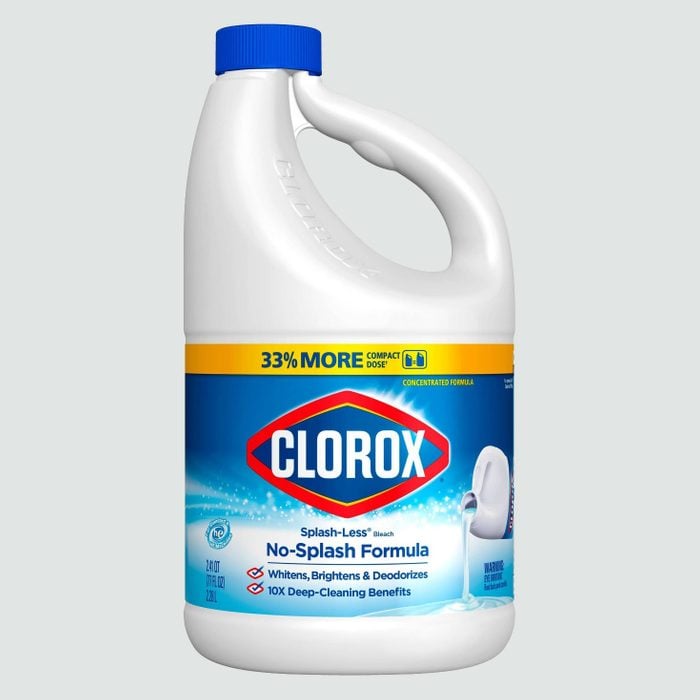 via target.com
via target.com
Clorox Bleach
Yes, you have to do a little work, but it’s really just a little. Straight-up bleach should be diluted with water: 1/3 cup of bleach per gallon of water, to be exact, according to the Centers for Disease Control and Prevention (CDC) and the EPA. Then, advises Homer, spray it on any pre-cleaned surface, let it sit for ten minutes to fully disinfect for coronavirus, and then let it air-dry. But, she adds, you’ll only get “a full germ kill on a surface that has already been cleaned with soap and water first.” Whatever you do, though, never mix bleach with ammonia: Combining them creates a toxic gas called chloramine, which can cause coughing, breathing problems, and chest pain.
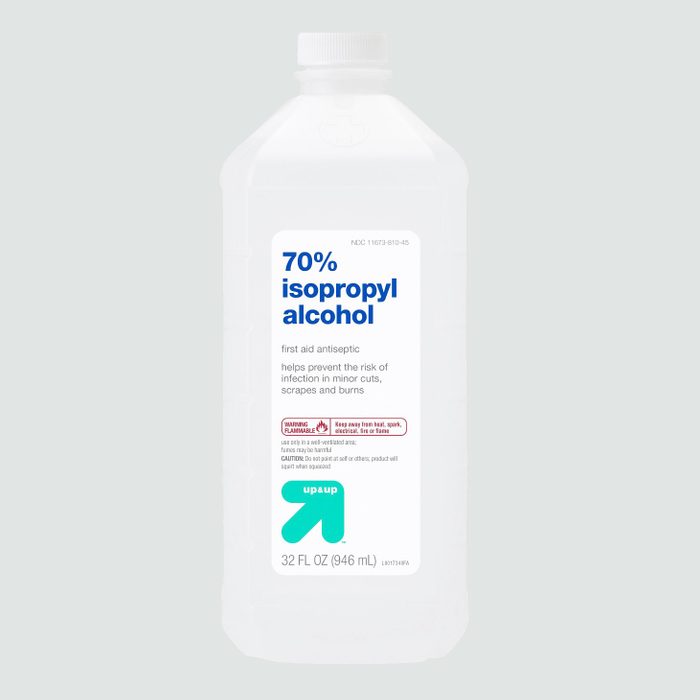 via target.com
via target.com
Isopropyl Alcohol
Odorless and budget-friendly, your basic 70 percent rubbing alcohol does a great job of disinfecting surfaces. And all you have to do is pour it into a spray bottle and spritz it around high-traffic areas in your home. “It has a kill time of two to three minutes, but I like to leave it up to five minutes just to be on the safe side,” says Alon Feld, district manager of All Bright Professional Services. Commonly used in health care facilities on surfaces and on small non-critical items, according to the journal Infection Control & Hospital Epidemiology, it actually works better when there’s a lower concentration of alcohol in it (hence, the 70 percent). Why? Because alcohol with higher concentrations evaporates more quickly and therefore doesn’t dwell on the surface long enough. Here are another 15 ways to use rubbing alcohol.
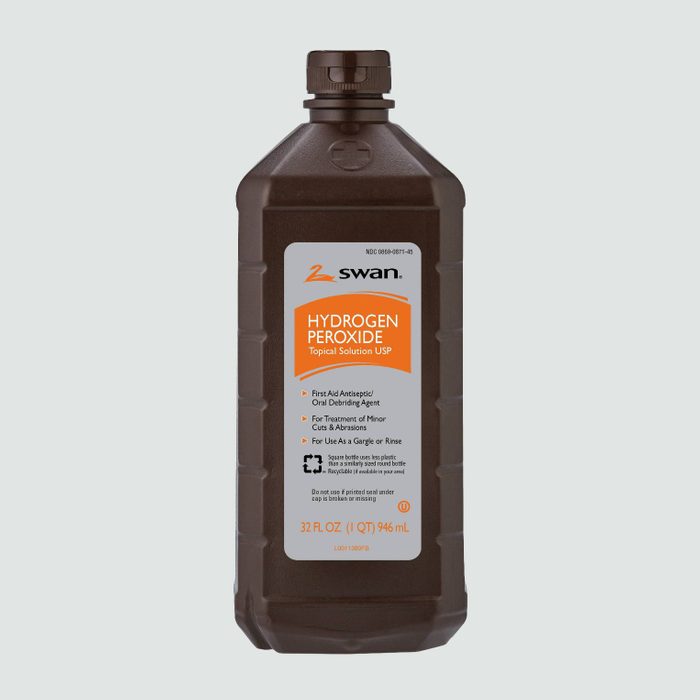 via target.com
via target.com
Hydrogen Peroxide
If you don’t have any rubbing alcohol on hand, 3 percent hydrogen peroxide is a solid backup—and it’s super inexpensive. However, Feld notes, it takes longer to work. In fact, while rubbing alcohol can kill coronavirus germs in five minutes or less, you’ll need to leave this on for 20 minutes. Yes, it’s a long time, but it’s good in a pinch when so much is sold out, and it doesn’t have a strong odor like bleach does. So, set your alarm and tackle some other cleaning projects while it’s working its magic. Plus, Feld adds, “there’s no need to [thoroughly] wash it off; a wipe-down is enough.”
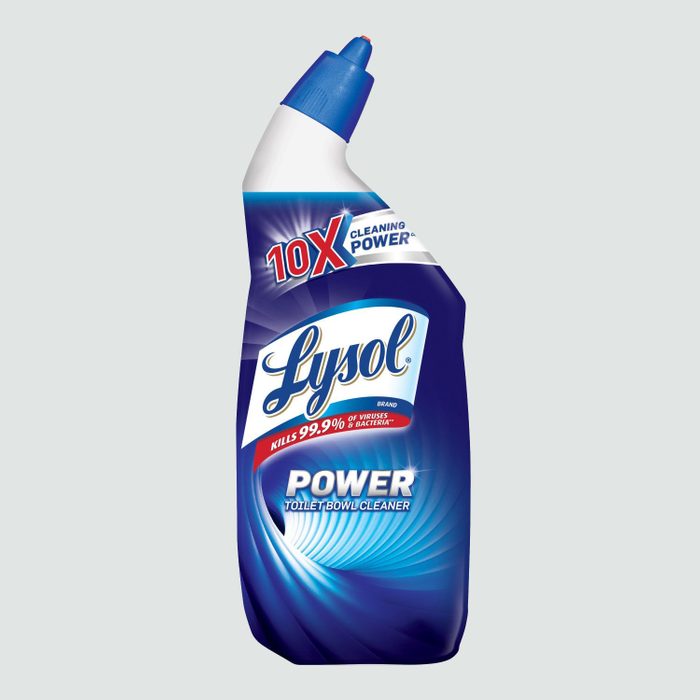 via target.com
via target.com
Lysol Toilet Bowl Cleaner
While it might not be the coveted Lysol wipes or aerosol spray you were hoping to get your hands on, it’s still an excellent disinfectant—and you can still get it. “Coronavirus or not, it is always important to disinfect your toilet because human waste is still one of the biggest sources of infection there is,” says Homer. “Most Lysol bowl cleaners are already coronavirus-ready and work great.” The active ingredient in most Lysol toilet bowl cleaners is benzalkonium chloride, though some formulations use bleach and hydrogen peroxide. Here’s what kills bacteria—and what doesn’t.
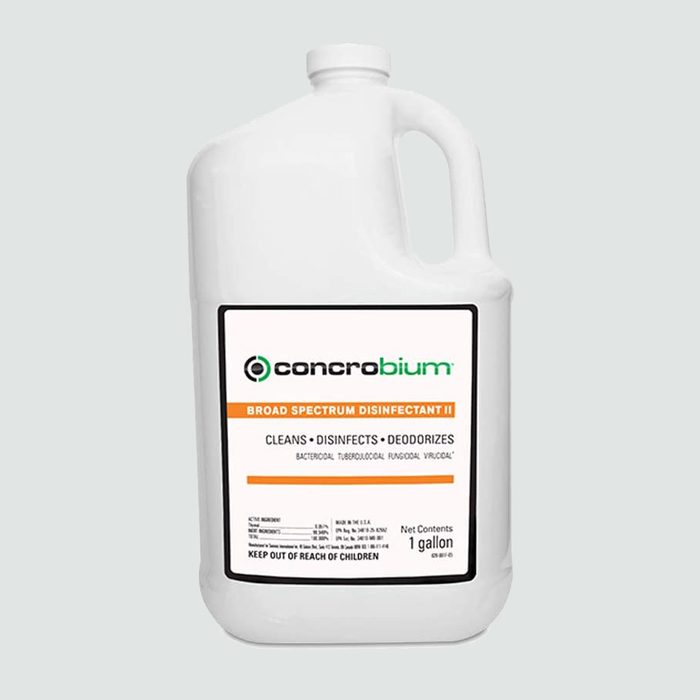 via amazon.com
via amazon.com
Concrobium Broad Spectrum Botanical Disinfectant
You may have never heard of it, but that doesn’t mean it’s not good. Thymol, an all-natural disinfectant derived from thyme oil (yes, as in the thyme in your spice rack), was recently given the EPA’s stamp of approval against coronavirus. According to Michael Rubino, president of the cleaning company All American Restoration, there are two standout products on the market that contain thymol: Concrobium Broad Spectrum Botanical Disinfectant and Benefect Decon 30. While the latter is currently sold out, you can still get your hands on Concrobium.
Using a botanical product like this has some serious perks, too. Aside from being effective, it doesn’t carry a toxic-exposure risk because it’s chemical-free. In fact, you can enter the space where you’ve used it almost immediately without being overcome by noxious fumes. “Our team has used these botanical products to disinfect places like ob-gyn and pediatric offices since children are often around these places and we don’t want to risk their exposure to more abrasive disinfectants,” says Rubino.
For more strategies to stay safe and sane, see our comprehensive Coronavirus Guide.
